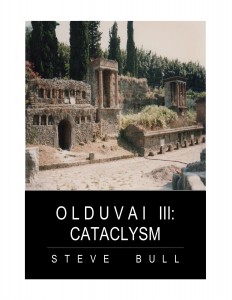Home » Posts tagged 'collapse'
Tag Archives: collapse
The Bulletin: November 19-25, 2025
The Bulletin: November 19-25, 2025 This past week’s articles of interest… CLICK HERE If you’re new to my writing, check out this overview. Living well within limits – by Catherine Knight How to Reverse the Massive Worldwide Loss of Soil Moisture, and Why … What Is a City? Archaeological and Historical Perspectives As Energy Costs […]
The Bulletin: November 12-18, 2025
The Bulletin: November 12-18, 2025 This past week’s articles of interest… CLICK HERE If you’re new to my writing, check out this overview. Chris Hedges: The Empire Self-Destructs – Consortium News Latin American Kuwait: Trump’s Looming War In the Caribbean Might Have Nothing To Do With Narco Terrorism The seminal papers on water – by […]
The Bulletin: October 29-November 4, 2025
The Bulletin: October 29-November 4, 2025 This past week’s articles of interest… CLICK HERE If you’re new to my writing, check out this overview. New Mexico Officials Report High Rate Of ‘Forever Chemicals’ In Residents Near Air Base | ZeroHedge Barack Obama Proposes a Scary Idea for Social Media Censorship Is Now A New Form […]
The Bulletin: October 22-28, 2025
The Bulletin: October 22-28, 2025 This past week’s articles of interest… CLICK HERE If you’re new to my writing, check out this overview. Japan Pushes Back on U.S. Pressure to Halt Russian Energy Imports | OilPrice.com Demystifying Collapse Western Media Finally Admit That Trump’s Mobilisation of Forces Against Venezuela Is All About Regime Change | […]
The Bulletin: October 15-21, 2025
The Bulletin: October 15-21, 2025 This past week’s articles of interest… CLICK HERE If you’re new to my writing, check out this overview. Wellbeing: Vitamin D2 or D3? – by Robert W Malone MD, MS Concerns Mount Over Europe’s Below-Average NatGas Storage Levels Ahead Of Winter | ZeroHedge Britain Set to Outlaw Fracking After Decades […]
The Bulletin: October 8-14, 2025
The Bulletin: October 8-14, 2025 This past week’s articles of interest… CLICK HERE If you’re new to my writing, check out this overview. Thermodynamic drag It’s Already Started: The Oil Crisis They Said Would Never Happen As Colorado River Nears Collapse, It Faces Leadership, Transparency ‘Crisis,’ Environmentalists Warn – Inside Climate News From Fear to […]
The Bulletin: September 17-23, 2025
The Bulletin: September 17-23, 2025 This past week’s articles of interest… CLICK HERE If you’re new to my writing, check out this overview. How to think about the prospects of truly green growth | Aeon Essays UN Sessions on Solar Geoengineering Trigger Unease – Inside Climate News Book Review: Small is Beautiful – by Shane […]
The Bulletin: September 3-9, 2025
The Bulletin: September 3-9, 2025 This past week’s articles of interest… CLICK HERE If you’re new to my writing, check out this overview. The Disruptor: William Rees Knows How to Save the World Slow down or die (degrowth, collapse, strategy) Collapse and the Consensus Trance What Happens After Humans Go Extinct How Water Shapes Our […]
The Bulletin: August 27-September 2, 2025
The Bulletin: August 27-September 2, 2025 This past week’s articles of interest… CLICK HERE If you’re new to my writing, check out this overview. Experts Warn The Internet Will Go Down In A Big Way — And You’d Better Be Ready Bioregioning Is Our Future – resilience Forest Fires: The Disheartening Post of the Day […]
Today’s Contemplation: Collapse Cometh CV–That Uncertain Road, Part 2
Today’s Contemplation: Collapse Cometh CV–That Uncertain Road, Part 2 March 6, 2023 (original posting date) Teotihuacan, Mexico. (1988) Photo by author. That Uncertain Road, Part 2 The set of possible futures includes a great variety of paths. There may be abrupt collapse; it is also possible there may be a smooth transition to sustainability. But […]
The Bulletin: August 20-26, 2025
The Bulletin: August 20-26, 2025 This past week’s articles of interest… CLICK HERE If you’re new to my writing, check out this overview. The Machine that Is Eating the Earth – by David Haggith Global Nuclear Power Hits Record High as Asia Surges Ahead | OilPrice.com Why Oil Prices Don’t Rise To Consistently High […]
The Bulletin: August 13-19, 2025
The Bulletin: August 13-19, 2025 This past week’s articles of interest… CLICK HERE If you’re new to my writing, check out this overview. Science Snippets: Connecting War with Climate Change The Forgotten Skills of Dying and Grieving Well: How Engaging with Loss Can Help Us Live More Fully You Can’t Make This Shit Up – […]
Today’s Contemplation: Collapse Cometh CCXI–Collapse, Environment, and Society
Today’s Contemplation: Collapse Cometh CCXI–Collapse, Environment, and Society Collapse, Environment, and Society is a 2012 article by geographer Karl Butzer (see: here and here) whose academic career focussed upon the relationship between humans and their environment. In this article (summarised in more detail below), Butzer takes issue with often oversimplified narratives regarding societal ‘collapse’. He argues that societal decline […]
The Bulletin: July 30-August 5, 2025
The Bulletin: July 30-August 5, 2025 This past week’s articles of interest… CLICK HERE If you’re new to my writing, check out this overview. About Spreading Lies Severe Drought Threatens 25% of Crops in Russia’s Agricultural Heartland – The Moscow Times Green transition: sustainable for whom? | Meer Nothing Can Stop This Train: Our Financial […]
The Bulletin: July 23-29, 2025
The Bulletin: July 23-29, 2025 This past week’s articles of interest… CLICK HERE If you’re new to my writing, check out this overview. Brace For Soaring Electricity Bills: Biggest US Power Grid Sets Power Costs At Record High To Feed AI | ZeroHedge Plant, Persist, Prevail: Collective Grower Wisdom (#1) Iran’s President ‘Ready’ For War […]



